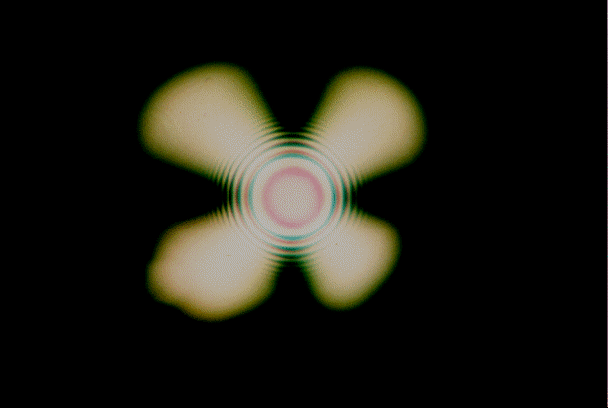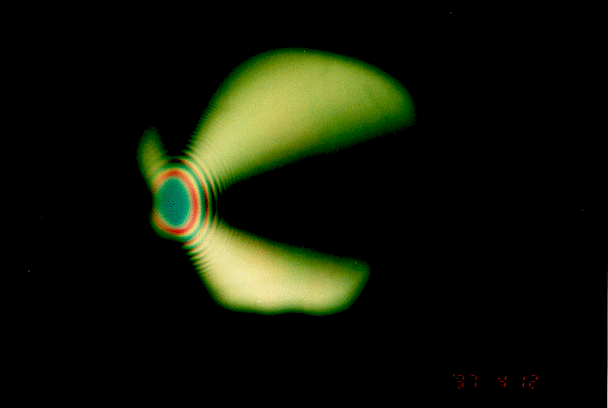
How to distinguish quartz from glass?
----- if both are colorless, inch-size balls -----
by Akira ISHIWATARI (Dept. Earth Sci., Fac. Sci., Kanazawa Univ.)
Photos: [Quartz 1] [Quartz 2] [Glass 1] [Glass 2] [Japanese version]
[Ishiwatari's Page] [Ishiwatari Labo Page] [Rock & Mineral Quiz] [Message Board]
Quartz and glass are not easy to distinguish by the naked eye especially when the two materials are of the same color and shape. However, if two small plastic polarizer plates or two polarizing filters for photographic use are available, we can easily distinguish quartz (crystal) from glass (non-crystal). Please purchase two polarizers at a scientific equipment shop or a camera shop, buy a quartz ball of about 2 cm (1 inch) diameter at a gem shop, and get a colorless glass ball of the same size at a toy shop. Procedure of the experiment is as follows:
1. Please hold one polarizer by one hand against a bright window or wall. It looks slightly dark, but it does not change its darkness much when you turn it clockwise or anticlockwise, though the darkness may slightly change if you see blue sky through the turning polarizer.
2. Please hold another polarizer by another hand and put it in front of the previous polarizer. This time, when you turn the latter polarizer clockwise or anticlockwise, you find that the two polarizers look completely dark at a specific angle (and also an angle 180 degrees apart).
3. Please hold the two polarizers by one hand so as to be completely dark, parallel with each other, and 2 or 3 cm (1 inch or so) apart.
4. Please hold quartz ball by another hand, and put it between the two polarizers. If you turn the quartz ball in every direction, you can find colored concentric rings with a colored "eye" at the center and four black bands (or a cross) radiating from the eye (Photo 1). You can see the same features on the opposite side when you turn the quartz ball 180 degrees. These features are the evidences for quartz, and the "eyes" correspond to the crystal axis. The cross is called "isogyre" among the specialists.
5. Please turn the quartz ball 45 degrees to the left. The eye, the rings, and the cross also turn to the left together (Photo 2). You can see these features much more clearly in the yellow light of a sodium lamp, although the image becomes monochromatic.
6. Then, please hold glass ball, and put it between the two polarizers. You can see a broad black cross at the center even if you turn the ball in any direction or move your eyes at any position (Photo 3). This feature is the evidence for glass.
7. In case of a slightly irregular (non-spherical) glass ball, which is often sold in a toy shop, you can see two hyperbolic lines approaching at the center, or deformed cross (Photo 4).
Please try this experiment. You will be a specialist who can distinguish quartz from glass.

[Photo 1]
A quartz ball put between crossed polarizers and seen
from the c-axis direction. Concentric interference rings and
thick black lines (isogyres) crossing at the center of the rings
are distinct.

[Photo 2]
A quartz ball put between crossed polarizers and seen from a
direction 45 degrees apart from the c-axis. The interference
rings and isogyres together turn to the left.

[Photo 3]
A glass ball put between crossed polarizers. No interference
rings appear, and the black lines always cross at the center even
if you turn the ball.
BACK

[Photo 4]
A slightly non-spherical glass ball put between crossed
polarizers. The cross splits into two hyperbolic lines.
BACK
Established: Dec. 12, 2001 Revised: Dec. 13, 2001